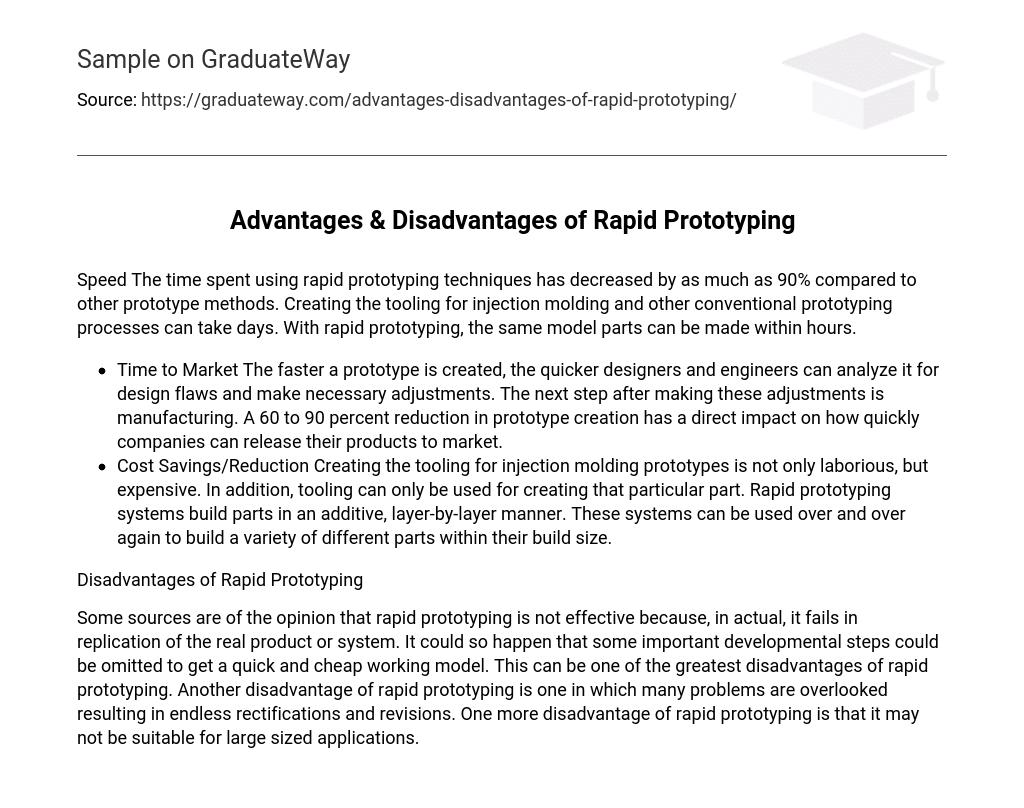Speed: Compared to other prototype methods, the time spent using rapid prototyping techniques has decreased by as much as 90%. While creating tooling for injection molding and other conventional prototyping processes can take days, rapid prototyping enables the production of the same model parts within hours.
- Time to Market The faster a prototype is created, the quicker designers and engineers can analyze it for design flaws and make necessary adjustments. The next step after making these adjustments is manufacturing. A 60 to 90 percent reduction in prototype creation has a direct impact on how quickly companies can release their products to market.
- Cost Savings/Reduction Creating the tooling for injection molding prototypes is not only laborious, but expensive. In addition, tooling can only be used for creating that particular part. Rapid prototyping systems build parts in an additive, layer-by-layer manner. These systems can be used over and over again to build a variety of different parts within their build size.
Disadvantages of Rapid Prototyping
Some sources argue that rapid prototyping is ineffective because it fails to accurately replicate the real product or system. This can occur when important developmental steps are skipped in order to quickly and cheaply create a working model. This is seen as one of the major drawbacks of rapid prototyping. Additionally, rapid prototyping can lead to numerous problems being overlooked, resulting in endless adjustments and revisions. Another drawback is that rapid prototyping may not be suitable for large-scale applications.





